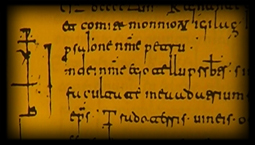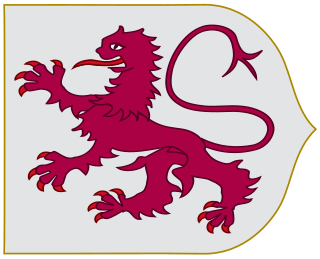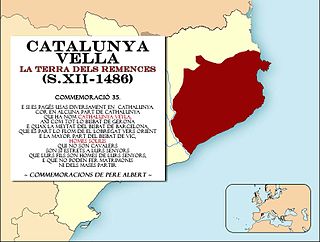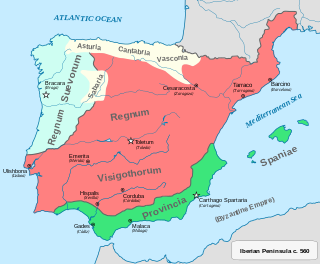 W
WIn many ways, the history of Spain is marked by waves of conquerors who brought their distinct cultures to the peninsula. After the passage of the Vandals and Alans down the Mediterranean coast of Hispania from 408, the history of medieval Spain begins with the Iberian kingdom of the Arianist Visigoths (507–711), who were converted to Catholicism with their king Reccared in 587. Visigothic culture in Spain can be seen as a phenomenon of Late Antiquity as much as part of the Age of Migrations.
 W
WAl-Andalus was the Umayyad-ruled Iberian Peninsula. The term is used by modern historians for the former Islamic states in Iberia. At its greatest geographical extent, its territory occupied most of the peninsula and a part of present-day southern France, Septimania, and for nearly a century extended its control from Fraxinet over the Alpine passes which connect Italy to Western Europe. The name more specifically describes the different Arab or Berber states that controlled these territories at various times between 711 and 1492, though the boundaries changed constantly as the Christian Reconquista progressed, eventually shrinking to the south and finally to the vassalage of the Emirate of Granada.
 W
WAutos sacramentales are a form of dramatic literature which is unique to Spain, though in some respects similar in character to the old Morality plays of England.
 W
WThe Ballestero de Monte or Fiel de rastro, was a member of a body which provided vigilance in the mountains of Murcia, Lorca, Cartagena and Orihuela as well pursuing bandits from the Kingdom of Granada when they attacked. These groups operated between the 13th and 15th centuries.
 W
WThe cartularies of Valpuesta are two medieval Spanish cartularies which belonged to a monastery in the locality of Valpuesta in what is now the province of Burgos, Castile and León, Spain. The cartularies are called the Gótico and the Galicano from the type of script used in each. They are housed in the National Archives of Spain.
 W
WThe Central March or Middle March was the central of the three marches along the northern frontier of the Emirate and Caliphate of Córdoba between the 8th and 11th centuries. It lay between the Lower March to the southwest and the Upper March to the northeast. Its administrative centre was at first Toledo, later Medinaceli.
 W
WThis is a list of the counts of Urgell, a county of the Principality of Catalonia in the 10th through 13th centuries.
 W
WThe County of Aragon or County of Jaca was a small Frankish marcher county in the central Pyrenean valley of the Aragon river, comprising Ansó, Echo, and Canfranc and centered on the small town of Jaca, an area now part of Spain. It was created by the Carolingians late in the 8th or early in the 9th century, but soon fell into the orbit of the Kingdom of Navarre, into which it was absorbed in 922. It would later form the core of the 11th century Kingdom of Aragon.
 W
WThe Crown of Aragon was a composite monarchy, also nowadays referred to as a confederation of individual polities or kingdoms ruled by one king, originated by the dynastic union of the Kingdom of Aragon and the County of Barcelona and ended as a consequence of the Spanish War of Succession. At the height of its power in the 14th and 15th centuries, the Crown of Aragon was a thalassocracy controlling a large portion of present-day eastern Spain, parts of what is now southern France, and a Mediterranean "empire" which included the Balearic Islands, Sicily, Corsica, Sardinia, Malta, Southern Italy and parts of Greece.
 W
WThe Kingdom of Aragon was a medieval and early modern kingdom on the Iberian Peninsula, corresponding to the modern-day autonomous community of Aragon, in Spain. It should not be confused with the larger Crown of Aragon, that also included other territories — the Principality of Catalonia, the Kingdom of Valencia, the Kingdom of Majorca, and other possessions that are now part of France, Italy, and Greece — that were also under the rule of the King of Aragon, but were administered separately from the Kingdom of Aragon.
 W
WThe Kingdom of Asturias was a kingdom in the Iberian Peninsula founded in 718 by the Visigothic nobleman Pelagius. It was the first Christian political entity established after the Umayyad conquest of Visigothic Hispania in 718 or 722. That year, Pelagius defeated an Umayyad army at the Battle of Covadonga, in what is usually regarded as the beginning of the Reconquista.
 W
WThe Kingdom of Castile was a large and powerful state on the Iberian Peninsula during the Middle Ages. Its name comes from the host of castles constructed in the region. It began in the 9th century as the County of Castile, an eastern frontier lordship of the Kingdom of León. During the 10th century, its counts increased their autonomy, but it was not until 1065 that it was separated from León and became a kingdom in its own right. Between 1072 and 1157, it was again united with León, and after 1230, this union became permanent. Throughout this period, the Castilian kings made extensive conquests in southern Iberia at the expense of the Islamic principalities. The Kingdoms of Castile and of León, with their southern acquisitions, came to be known collectively as the Crown of Castile, a term that also came to encompass overseas expansion.
 W
WThe Kingdom of Galicia and León was an independent kingdom situated in the northwest region of the Iberian Peninsula. It was founded in AD 910 when the Christian princes of Galicia along the northern coast of the peninsula shifted their capital from Oviedo to the city of León. The kings of Galicia fought civil wars, wars against neighbouring kingdoms, and campaigns to repel invasions by both the Moors and the Vikings, all in order to protect their kingdom's changing fortunes.
 W
WThe Kingdom of Navarre, originally the Kingdom of Pamplona, was a Basque kingdom that occupied lands on either side of the western Pyrenees, alongside the Atlantic Ocean between present-day Spain and France.
 W
WThe Kingdom of Valencia, located in the eastern shore of the Iberian Peninsula, was one of the component realms of the Crown of Aragon. When the Crown of Aragon merged by dynastic union with the Crown of Castile to form the Kingdom of Spain, the Kingdom of Valencia became a component realm of the Spanish monarchy.
 W
WOld Catalonia was a legal concept created by Catalan jurist Pere Albert in the second quarter of the thirteenth century to refer to the territories of Catalonia containing remensa peasants from the Diocese of Girona, the eastern half of the Diocese of Vic and the portion of the Archdiocese of Barcelona east of the Llobregat river.
 W
WThe Principality of Catalonia was a medieval and early modern state in the northeastern Iberian Peninsula. During most of its history it was in dynastic union with the Kingdom of Aragon, constituting together the Crown of Aragon. Between the 13th and the 18th centuries, it was bordered by the Kingdom of Aragon to the west, the Kingdom of Valencia to the south, the Kingdom of France and the feudal lordship of Andorra to the north and by the Mediterranean sea to the east. The term Principality of Catalonia remained in use until the Second Spanish Republic, when its use declined because of its historical relation to the monarchy. Today, the term Principat (Principality) is used primarily to refer to the autonomous community of Catalonia in Spain, as distinct from the other Catalan Countries, and usually including the historical region of Roussillon in southern France.
 W
WRemensa was a Catalan mode of serfdom. Those who were serfs under this mode are properly pagesos de remença ; they are often referred to simply as remences.
 W
WSanta Hermandad was a type of military peacekeeping association of armed individuals, which became characteristic of municipal life in medieval Spain, especially in Castile. Modern hermandades in Spain, some of which evolved from medieval origins, are now for the most part religious confraternities retaining only a military structure and ethos.
 W
W¡Santiago!, is a Christian rallying cry of Spanish soldiers during the Reconquista and crusading era of medieval Spain. The phrase, “¡Santiago y cierra España!” — literally, “St. James and Seal Spain!” or "Santiago and close, Spain!" was an appeal to St. James to intercede in closing Spain's borders from foreign bodies and invasion. Contrary to this interpretation there are other authors who argue that the military order closes, in military terms means to engage in combat, attack or attack; "Close" the distance between you and the enemy.St. James became the patron of Spain, and the hope and the mainstay of the Christian people in times of stress, war and threatening ruin.
 W
WThe Sentencia Arbitral de Guadalupe was a legal decree delivered by King Ferdinand II of Aragon at the Monastery of Santa María de Guadalupe in Extremadura, Spain on 21 April 1486 to free the Catalan remensa peasants who were subjects of the lord of the manor and tied to his lands and subject to numerous onerous fees and maltreatment under the so-called evil customs.
 W
WSpania was a province of the Byzantine Empire from 552 until 624 in the south of the Iberian Peninsula and the Balearic Islands. It was established by the Emperor Justinian I in an effort to restore the western provinces of the Empire.
 W
WDuring the Middle Ages, Medieval Europe was engaged in constant warfare. European warfare during the Middle Ages was marked by a transformation in the character of warfare from antiquity, changing military tactics, and the role of cavalry and artillery. In addition to military, tactical and technological innovations during this period, chivalric military and religious ideals arose, giving motivation for engagement in the ceaseless warfare. In the Iberian Peninsula, chivalric ideals and institutions would be adopted and exercised with more fervour than anywhere else.
 W
WThe Umayyad Caliphate was the second of the four major caliphates established after the death of Muhammad. The caliphate was ruled by the Umayyad dynasty. The third caliph of Rashidun Caliphate, Uthman ibn Affan, was also a member of the Umayyad clan. The family established dynastic, hereditary rule with Muawiya ibn Abi Sufyan, long-time governor of al-Sham, who became the sixth caliph after the end of the First Muslim Civil War in 661. After Mu'awiyah's death in 680, conflicts over the succession resulted in a Second Civil War and power eventually fell into the hands of Marwan I from another branch of the clan. The region of Syria remained the Umayyads' main power base thereafter, and Damascus was their capital.
 W
WThe Upper March was an administrative and military division in northeast Al-Andalus, roughly corresponding to the Ebro valley and adjacent Mediterranean coast, from the 8th century to the early 11th century. It was established as a frontier province, or march, of the Emirate, later Caliphate of Córdoba, facing the Christian lands of the Carolingian Empire's Marca Hispanica, the Asturo-Leonese marches of Castile and Alava, and the nascent autonomous Pyrenean principalities. In 1018, the decline of the central Cordoban state allowed the lords of the Upper March to establish in its place the Taifa of Zaragoza.
 W
WThe Visigothic Kingdom or the Kingdom of the Visigoths was a kingdom that occupied what is now southwestern France and the Iberian Peninsula from the 5th to the 8th centuries. One of the Germanic successor states to the Western Roman Empire, it was originally created by the settlement of the Visigoths under King Wallia in the province of Gallia Aquitania in southwest Gaul by the Roman government and then extended by conquest over all of Hispania. The Kingdom maintained independence from the Eastern Roman or Byzantine Empire, whose attempts to re-establish Roman authority in Hispania were only partially successful and short-lived.